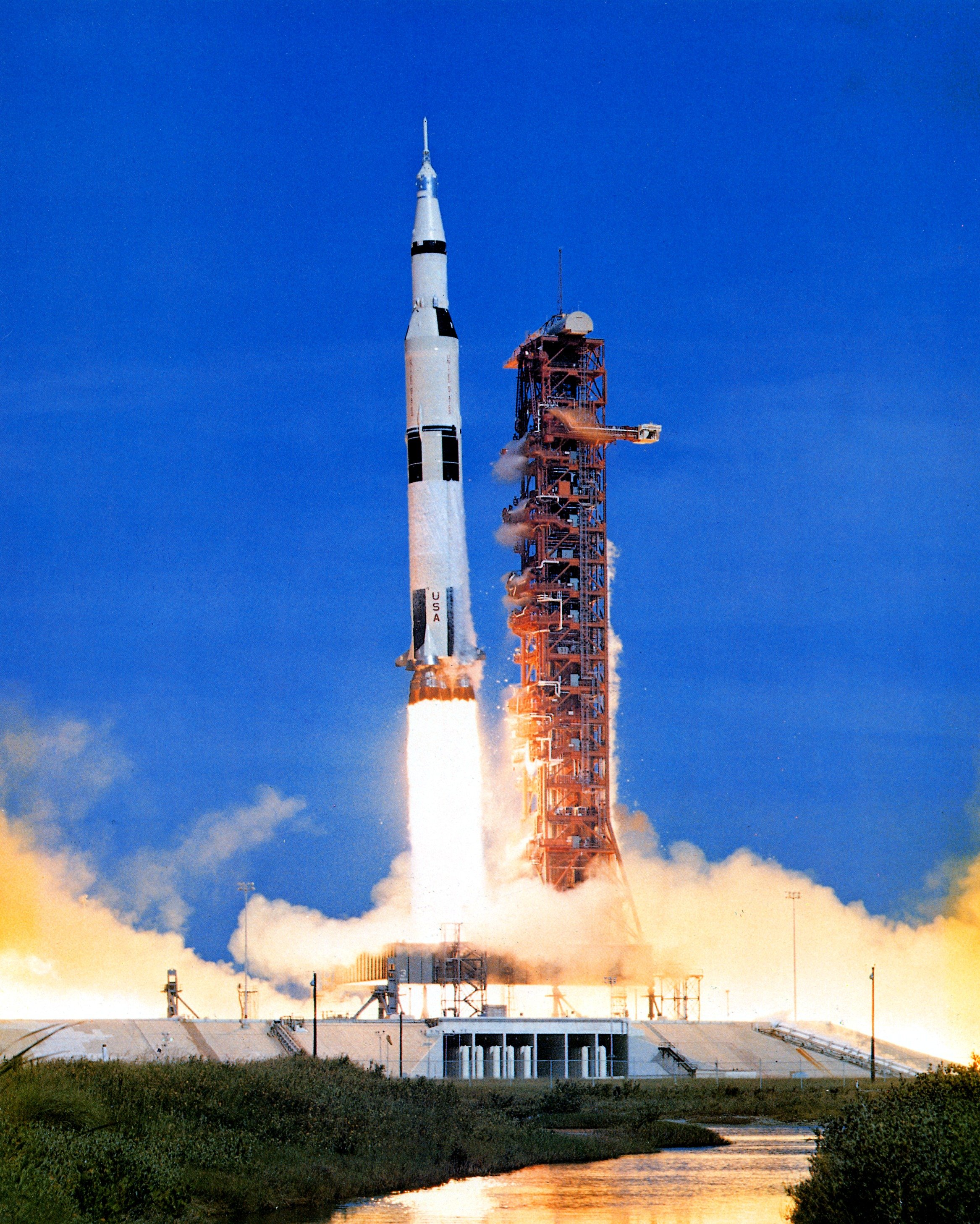History
The national effort that enabled Astronaut Neil Armstrong to speak those famous words as he stepped onto the lunar surface which fulfilled a dream as old as humanity.
Before the Apollo program began, Wernher von Braun and his team of rocket engineers had started work on plans for very large launch vehicles, the Saturn series, and the even larger Nova series. In the midst of these plans, von Braun was transferred from the Army to NASA, and made Director of the Marshall Space Flight Center. The initial direct ascent plan to send the three-man Apollo Command/Service Module directly to the lunar surface, on top of a large descent rocket stage, would require a Nova-class launcher, with a lunar payload capability of over 180,000 pounds (82,000 kg). The June 11, 1962, decision to use lunar orbit rendezvous enabled the Saturn V to replace the Nova
Two Block I CSMs were launched from LC-34 on suborbital flights in 1966 with the Saturn IB. The first, AS-201 launched on February 26, reached an altitude of 265.7 nautical miles(492.1 km) and splashed down 4,577 nautical miles(8,477 km) downrange in the Atlantic ocean.


The second, AS-202 on August 25, reached 617.1 nautical miles(1,142.9 km) altitude and was recovered 13,900 nautical miles(25,700 km) downrange in the Pacific ocean. These flights validated the Service Module engine and the Command Module heat shield. A third Saturn IB test, AS-203 launched from pad 37, went into orbit to support design of the S-IVB upper stage restart capability needed for the Saturn V. It carried a nosecone instead of the Apollo spacecraft, and its payload was the unburned liquid hydrogen fuel, the behavior of which engineers measured with temperature and pressure sensors, and a TV camera. This flight occurred on July 5, before AS-202, which was delayed because of problems getting the Apollo spacecraft ready for flight.
There were a total of 17 missions in the Apollo Program. Apollo 1 never reached lift-off due to a fire on the launchpad that ended up killing the entire crew. Apollo 2-6 were unmanned test flights. Apollo 7 was a manned orbital flight. Apollo 8 was a manned lunar orbital flight. Apollo 9 was a manned test of the Portable Life Support System to be used on the lunar surface. Apollo 10 was a dress rehearsal for first lunar landing, as the landing module flew down to 50,000 feet above the lunar surface. Apollo 11 was the fist lunar landing in human history (Read More Here). Apollo 12 was the second lunar landing. Apollo 13 was supposed to be the third lunar landing, but encountered disaster (Read More Here). Apollo 14 was the third lunar landing. Apollo 15 was the fourth lunar landing, and the first time a lunar landing included a lunar rover. Apollo 16 was the fifth lunar landing, and last but not least, Apollo 17 was the only Saturn V night launch, as well as the first geologist on the moon and the sixth and final manned lunar landing.